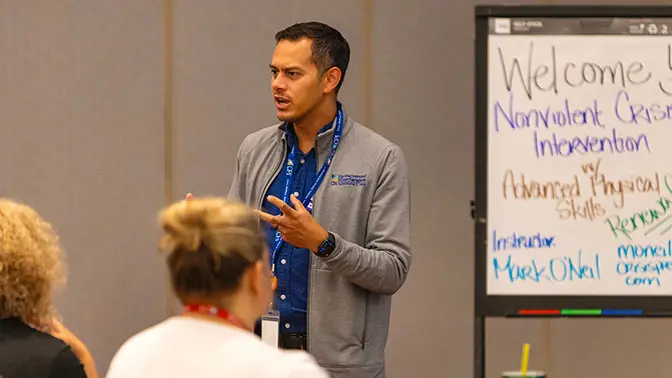Crisis situations can emerge unexpectedly in various professional settings—schools, healthcare facilities, correctional institutions, or workplaces. Equipping personnel with the right skills to manage these tense moments is essential, but teaching others how to do so requires a higher level of expertise. This is where crisis prevention intervention instructor training comes into play. This advanced training program prepares professionals to become certified trainers, capable of teaching others safe and effective de-escalation techniques.
Understanding Crisis Prevention Intervention
Crisis prevention intervention (CPI) focuses on strategies to prevent and manage disruptive or violent behaviors before they escalate into physical altercations. The emphasis is on maintaining the safety, dignity, and well-being of all individuals involved. Through non-violent techniques and respectful communication, CPI helps de-escalate high-stress situations, allowing for constructive resolutions.
Professionals trained in CPI are taught to recognize early warning signs, employ verbal and non-verbal communication skills, and—if necessary—apply physical interventions in a controlled, ethical manner. However, becoming an instructor in this field requires a more comprehensive approach.
The Role of an Instructor in Crisis Prevention
Those who undergo crisis prevention intervention instructor training gain the skills needed to lead and educate others in the proper use of CPI strategies. An instructor is not just a teacher—they are a mentor, a role model, and a key figure in promoting a safe and supportive environment.
Instructor candidates learn how to deliver content effectively, assess learners’ progress, and adapt training to suit different environments and learning styles. This level of training also focuses on legal responsibilities, professional ethics, and upholding the integrity of CPI protocols.
Key Components of Instructor Training
Instructor training in crisis prevention intervention typically includes the following essential components:
-
Comprehensive Theory Education: Understanding the psychology behind aggressive behavior, trauma-informed care principles, and the impact of environmental factors.
-
Practical Demonstrations: Hands-on training in de-escalation techniques, personal safety strategies, and safe physical interventions.
-
Instructional Techniques: Learning how to effectively teach adults, deliver feedback, and manage group dynamics.
-
Evaluation and Certification: Final assessments ensure candidates are fully prepared to teach CPI content responsibly and effectively.
This training usually spans several intensive days and includes both written and performance-based evaluations.
Why Organizations Need Certified Instructors
Organizations that invest in crisis prevention intervention instructor training empower themselves to build internal capacity for crisis management. Having in-house certified instructors reduces reliance on external trainers and ensures that staff can receive consistent, ongoing education.
This also promotes a culture of safety, reduces the risk of workplace injuries, and improves morale by showing that employee well-being is a priority. In high-stress fields like education, mental health, or law enforcement, having access to trained instructors can significantly improve outcomes for both staff and the people they serve.
Who Should Pursue Instructor Training?
CPI instructor training is ideal for professionals who are already experienced in crisis intervention and want to expand their influence. This includes:
-
Human resources and workplace safety officers
-
Mental health professionals
-
Teachers and school administrators
-
Healthcare workers
-
Correctional facility staff
Candidates should possess strong communication skills, emotional intelligence, and a passion for helping others learn and grow.
Long-Term Benefits of Instructor Certification
Becoming a certified instructor in crisis prevention intervention is more than just a credential—it’s a professional investment. Certified instructors often experience career advancement opportunities, increased respect in their organizations, and a deeper sense of contribution to public safety and mental well-being.
Moreover, instructors gain the ability to foster safer, more empathetic environments wherever they go—whether that’s in classrooms, clinics, offices, or community spaces.
Conclusion
Crisis prevention intervention instructor training is a powerful tool for those looking to lead with compassion, skill, and confidence in the face of conflict. As more organizations recognize the importance of proactive crisis management, the need for well-trained instructors continues to grow. Those who step into this role are not only educators—they are guardians of dignity, advocates for safety, and champions of calm in a chaotic world.



